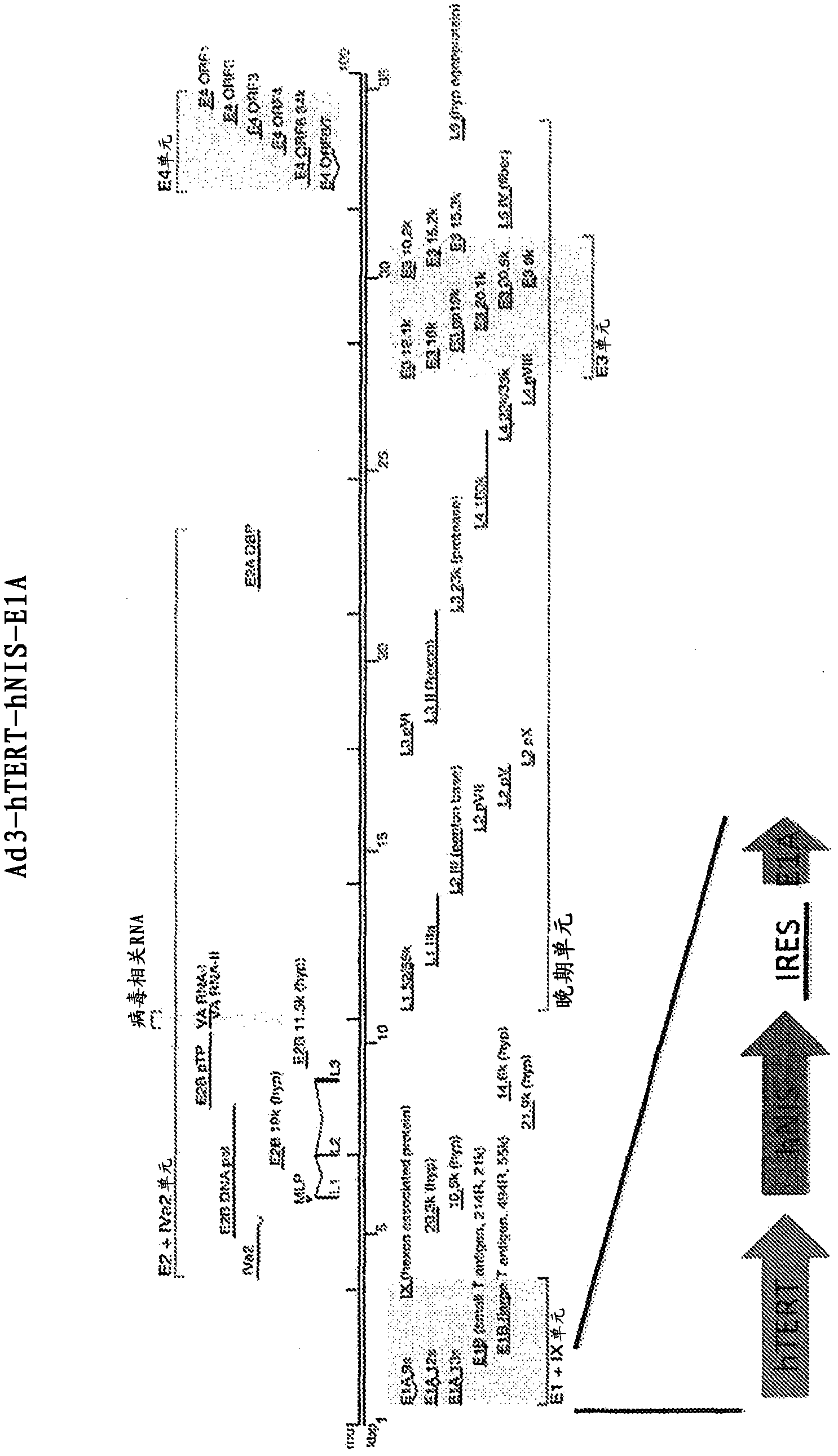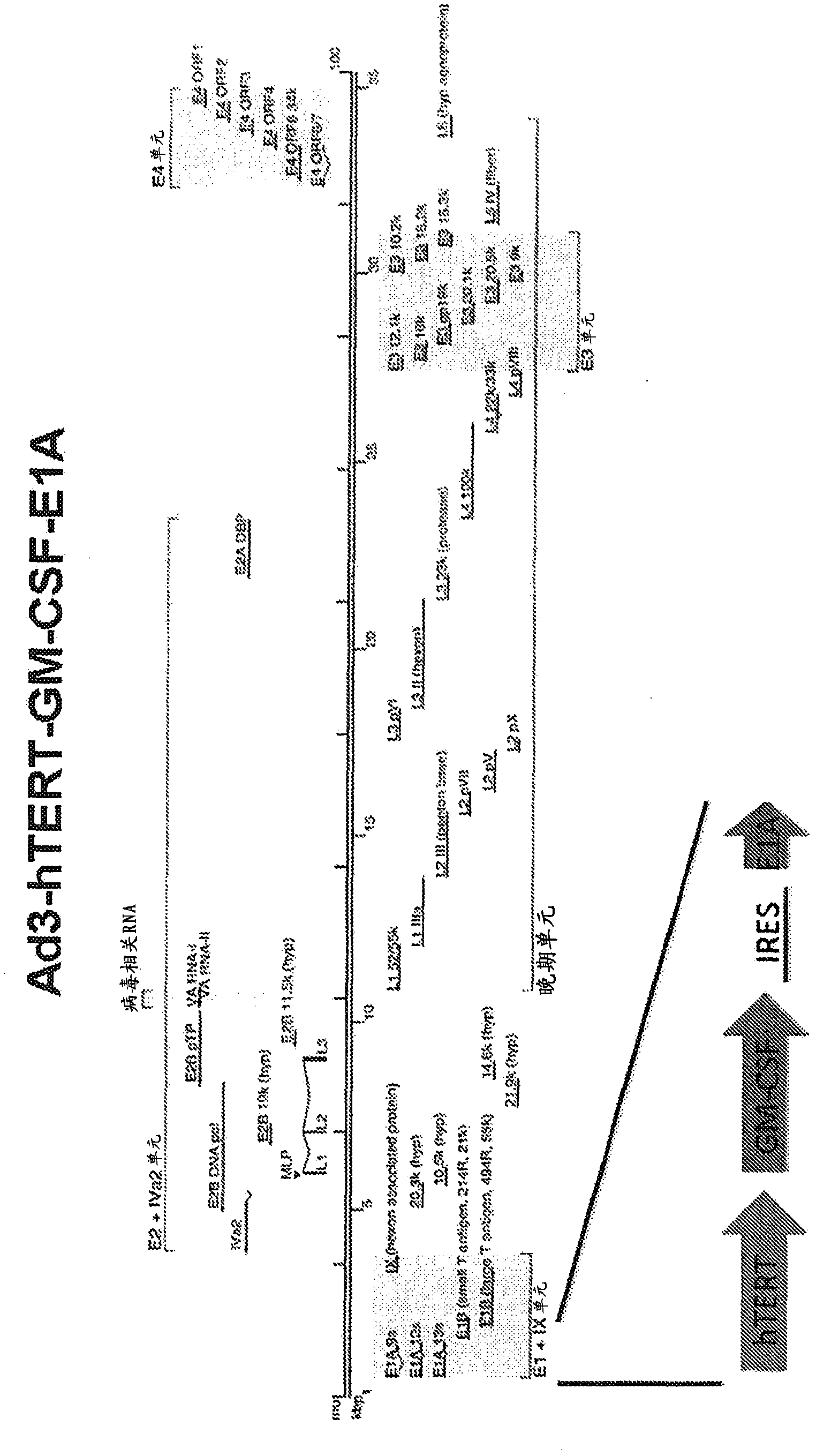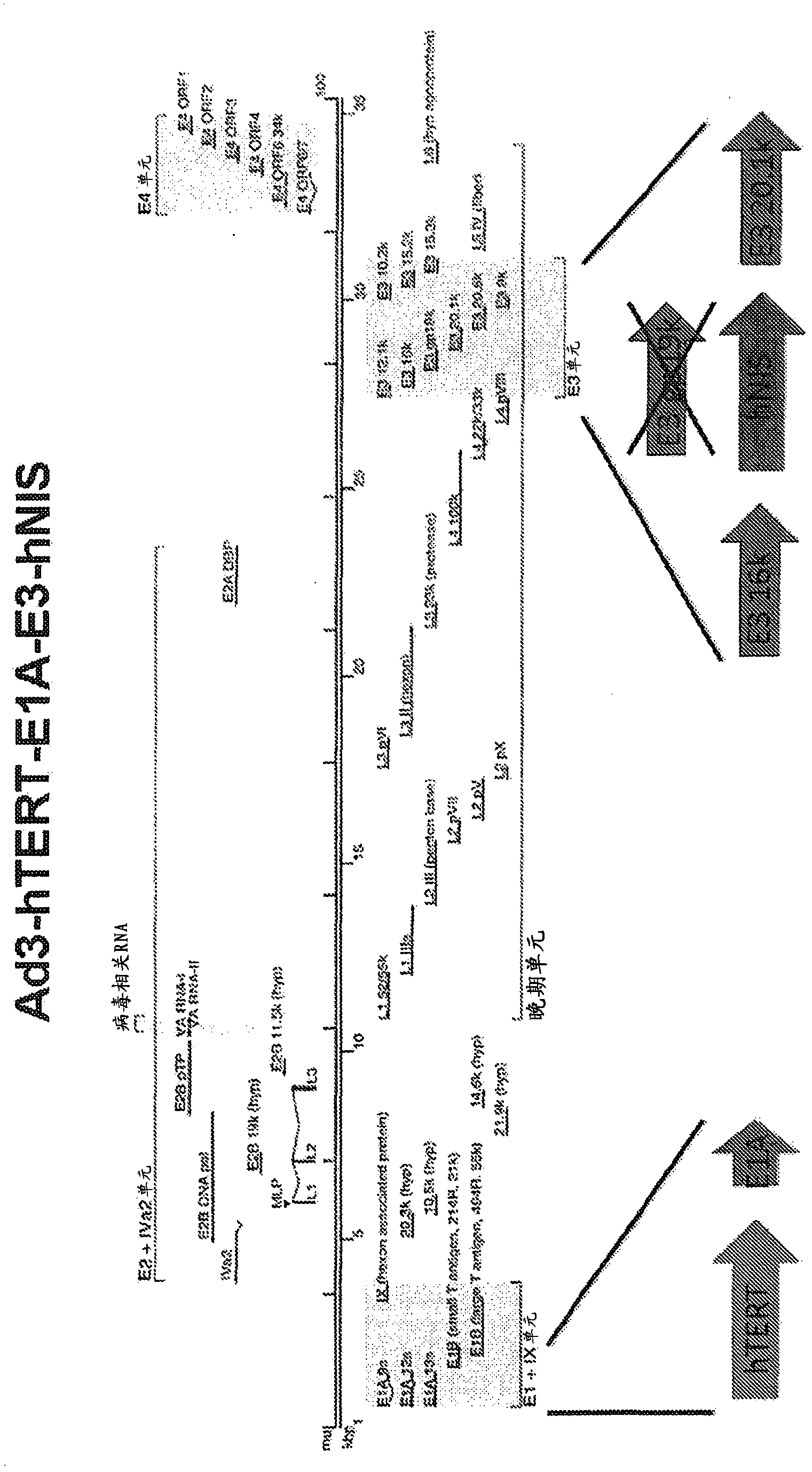Non-ad5 adenoviral vectors and methods and uses related thereto
An adenovirus and human adenovirus technology, applied in the field of medicine, can solve the problem of lack of a reasonable basis for tumor selectivity, and achieve the effect of improving cancer treatment and reducing side effects
- Summary
- Abstract
- Description
- Claims
- Application Information
AI Technical Summary
Problems solved by technology
Method used
Image
Examples
Embodiment
[0101] cell culture
[0102] 293 cells were purchased from Microbix (Toronto, Canada). 293-2v6-11 cells contain a ponasteron-inducible E4orf6 domain (Mohammadi E.S. et al. 2004, Nucleic Acids Res 32:2652-2659). 911-1c11 cells were maintained in 1 mg / ml of G418 (Sirena, D. et al. 2005, Virology 343:283-298). The SKOV3.ip1 ovarian adenocarcinoma cell line was obtained from Dr. Price (M.D. Anderson Cancer Center, Houston, TX). The ovarian adenocarcinoma cell line SKOV3-luc expressing firefly luciferin was kindly provided by Dr. Negrin (Stanford Medical School, Stanford, CA). The highly metastatic, hormone-resistant subline of prostate cancer, PC-3MM2, was a kind gift of Isaiah J. Findler (MD Anderson Cancer Center, Houston, TX). The highly lympho-metastatic subline LNM35 / EGFP of human lung large cell carcinoma was provided by Takashi Takahashi (The Honda Research Institute, Japan). Human umbilical vein endothelial cells known as HUVECs were purchased from Lonza (Basel, Switze...
PUM
 Login to View More
Login to View More Abstract
Description
Claims
Application Information
 Login to View More
Login to View More - R&D
- Intellectual Property
- Life Sciences
- Materials
- Tech Scout
- Unparalleled Data Quality
- Higher Quality Content
- 60% Fewer Hallucinations
Browse by: Latest US Patents, China's latest patents, Technical Efficacy Thesaurus, Application Domain, Technology Topic, Popular Technical Reports.
© 2025 PatSnap. All rights reserved.Legal|Privacy policy|Modern Slavery Act Transparency Statement|Sitemap|About US| Contact US: help@patsnap.com



